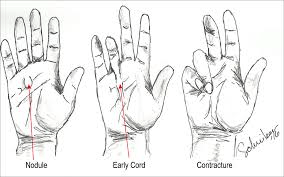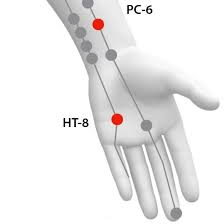Have you been living with sharp, stabbing pain in the sole of the foot or heel? Or pain when standing after a period of rest? You may have a case of plantar fasciitis.
Plantar fasciitis is an inflammatory condition affecting about 10% of the population at some point in their lives. Inflammatory conditions have up to four main components: heat, pain, swelling and /or redness.
The issue with plantar fasciitis is often tissue fatigue – the same movements repeated over and over irritating the fascia. The plantar fascia is also a shock absorbor for when the feet hit the ground. This condition typically appears in people after:
- excessive standing, walking or running
- a recent change in activities
- people who carry an excess of weight
- alignment issues in the foot or leg
What are the conventional treatments for plantar fasciitis?
Conventional treatments for plantar fasciitis include pain relievers, stretching, icing, rest and limiting aggravating activities. Steroid injections are a less conservative treatment that may bring some temporary relief. Steroid use does come with side effects such as weakened bone in the affected area after repeated use and systemic hormonal imbalance such as adrenal hormone excess or deficiency. As a last resort, surgery can be done but this is usually not necessary.
How does acupuncture treat plantar fasciitis?
The plantar fascia is a shock absorbor that runs along the Kidney channel of the foot. Typically, people with plantar fasciitis also have a Kidney channel deficiency which is the underlying root cause for this condition.
Using a system of mirroring, acupuncture can be done on the hand, and not the necessarily the affected foot. This is often a real bonus because it makes for a more comfortable treatment for the patient. The palm of the hand mirrors the sole of the foot. Using the Pericardium and/or Heart channel of the hand will relieve pain along the Kidney channel of the foot and support the Kidney system as well.
Acupuncture here will cause the nervous system to signal the brain to send more blood, energy and nutrients to the plantar fascia without needling the feet directly. The increase in blood and oxygen to the foot has analgesic and anti-inflammatory effects. The micro-tears and inflammation in the fascia that have developed from absorbing shock can now be repaired, allowing you to use your feet comfortably.
Other points may be used to promote circulation to the feet and to support the body`s endorphin production. Endorphins are feel-good hormones that provide an experience of well-being, and attach to the opioid receptors in the brain, making it easier for you to deal with pain without using prescription medications.
Acupuncture shines as a treatment for many types of pain and especially plantar fasciitis. I have many cases of treating plantar fasciitis using this treatment and it has worked well every time. Most patients will start to feel some relief within the first 1-3 treatments and full resolution within a short course of regular treatments in simple cases.
What else can I do to heal my heel?
Since plantar fasciitis is largely an issue of wear and tear, the most important lifestyle changes are:
- rest when and where you can
- stretching the calves and plantar fascia
- losing the weight
Acupuncture is used as a natural low-risk therapy that strengthens the fascia over time allowing you to be on your feet for longer. By improving blood flow to the area it will allow for greater flexibility to the band which allows for greater range of motion so that you can get back to doing the things you love.














 These stretches come from the Shiatsu tradition which is based on the five element system of medicine. If you already know which meridians (also known as channels) are out of balance you
These stretches come from the Shiatsu tradition which is based on the five element system of medicine. If you already know which meridians (also known as channels) are out of balance you 
 marrow, lymphocytes, the spleen, lymph nodes, and the thymus gland. White blood cells such as neutrophils, macrophages and dendritic cells identify what is not our body and destroy those cells. Eastern medicine focuses on building up the body’s internal defense system so that the microbe has no chance of getting a foothold.
marrow, lymphocytes, the spleen, lymph nodes, and the thymus gland. White blood cells such as neutrophils, macrophages and dendritic cells identify what is not our body and destroy those cells. Eastern medicine focuses on building up the body’s internal defense system so that the microbe has no chance of getting a foothold. the Sleep Research Society concluded that those who sleep only 5-6 hours per night have a greater risk of catching a cold.
the Sleep Research Society concluded that those who sleep only 5-6 hours per night have a greater risk of catching a cold.
 skin at the lateral side of the elbow joint. The end of the elbow crease marks Large Intestine 11. Pressing around this area may reveal some tenderness. Give this area some good pressure regularly. It is a homeostatic point that regulates both an under-active immune system (frequents colds, flus, cancer) as well as an overactive immune system (allergies, auto-immune disorders).
skin at the lateral side of the elbow joint. The end of the elbow crease marks Large Intestine 11. Pressing around this area may reveal some tenderness. Give this area some good pressure regularly. It is a homeostatic point that regulates both an under-active immune system (frequents colds, flus, cancer) as well as an overactive immune system (allergies, auto-immune disorders). series of 5 treatments for the fall and winter season, to encourage you to see for yourself the immune supporting benefits acupuncture can provide.
series of 5 treatments for the fall and winter season, to encourage you to see for yourself the immune supporting benefits acupuncture can provide.

 , cardiovascular disease, limb pain and numbness, skin ulceration and kidney failure. Maintaining a healthy diet, exercise and medication or herbs to control blood sugar are very important and acupuncture is not a substitute for these. Regular check-ups with your doctor are also important.
, cardiovascular disease, limb pain and numbness, skin ulceration and kidney failure. Maintaining a healthy diet, exercise and medication or herbs to control blood sugar are very important and acupuncture is not a substitute for these. Regular check-ups with your doctor are also important. abdomen). When there is excess insulin in the blood, the insulin creates inflammation in the body, otherwise known as Heat in TCM, affecting either the Upper Burner (Jiao) causing excessive thirst (polydipsea), the Middle Burner causing the urge to eat too much (polyphagia) or the Lower Burner causing too much urination (polyuria). This Heat clearing ability of acupuncture has been demonstrated scientifically in the before and after
abdomen). When there is excess insulin in the blood, the insulin creates inflammation in the body, otherwise known as Heat in TCM, affecting either the Upper Burner (Jiao) causing excessive thirst (polydipsea), the Middle Burner causing the urge to eat too much (polyphagia) or the Lower Burner causing too much urination (polyuria). This Heat clearing ability of acupuncture has been demonstrated scientifically in the before and after

 n North America are very high and requires practitioners to only used pre-packaged, sterile, single-use disposable
n North America are very high and requires practitioners to only used pre-packaged, sterile, single-use disposable
